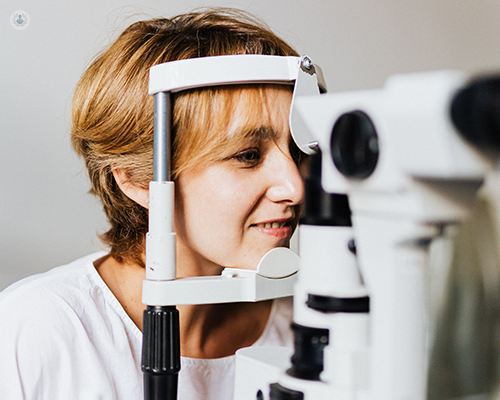Diabetic retinopathy: facts and treatments
Autore:Diabetic retinopathy (DR) is a complication of diabetes that affects the delicate part in the back of the eye (the retina). It’s mainly due to uncontrolled blood sugar causing damage to the retinal vessels, and it can lead to a loss of vision if untreated.

It is also the leading cause of blindness worldwide in people aged 20 to 64 years old. Diabetic retinopathy affects up to 80 per cent of those who have had diabetes for 20 years or more, however, 90 per cent of new cases could be reduced with proper treatment and eye monitoring.
Stages of diabetic retinopathy
There are two main stages for diabetic retinopathy:
- Non-proliferative diabetic retinopathy (NPDR)
- Proliferative diabetic retinopathy (PDR)
1. Non-proliferative diabetic retinopathy
Non-proliferative diabetic retinopathy (NPDR) usually has no symptoms. The only way to detect NPDR is by examining the fundus. The fundus is inside your eye, opposite the lens and at the back. It contains the optic disc, retina, macula, fovea and blood vessels.
When we examine the fundus, we look for bleeding, microaneurysms, accumulation of lipoproteins and changes in retinal vessels.
2. Proliferative diabetic retinopathy (PDR)
Proliferative diabetic retinopathy (PDR) results in abnormal new blood vessels (neovascularisation). They form at the back of the eye and can burst and bleed, resulting in a vitreous haemorrhage and/or traction retinal detachment.
If macular oedema (swelling caused by a build-up of fluid) occurs, the eye’s blood vessels leak their contents into the central vision and can cause blurry vision in any stage of the condition.
Vascular endothelial growth factor (VEGF) is a protein that stimulates the formation of new blood vessels. It’s secreted by the ischemic (diseased) retina, causing swelling (oedema) in the retina and new blood vessel formation.
How we diagnose diabetic retinopathy
We diagnose diabetic retinopathy by clinical examination and dilated fundus exams. Also, we may use a fluorescein angiography to determine the degree of ischemia in the retina. This diagnostic test involves using a special camera to track the blood flow in the retina.
We also use ocular coherence tomography (OCT), which is an imaging test that can determine the size and location of swelling in the macula area.
Managing diabetic retinopathy
Your diabetic retinopathy can be managed via systemic control and addressing factors associated with a high risk of diabetic retinopathy:
- Blood sugar
- Hypertension (high blood pressure)
- Kidney problems
- Dyslipidaemia (an irregular volume of lipids)
- Smoking
- Uncontrolled glucose
- Uncontrolled blood pressure levels
These associated risk factors have been proven to be associated with diabetic retinopathy by major studies such as The UK Prospective Diabetes Study (UKDPS) and the Wisconsin Epidemiologic Study of Diabetic Retinopathy (WESDR).
Treatments
Your treatment for diabetic retinopathy might include:
- Laser treatment
- Injections inside the eye (IVT)
- Surgery (this is used for advanced cases)
Results from several studies (DRCR, RIDE & RISE, DAVINCI and PLACID) have shown that anti-VEGF (vascular endothelial growth factor) steroid injections are very effective in treating central macular oedema, which can occur as part of diabetic retinopathy.
Furthermore, large Studies (e.g. DRCR protocol S and CLARITY) have demonstrated that the anti-VEGF injections are not inferior to PRP laser treatment, which is the gold standard treatment of proliferative diabetic retinopathy (PDR).
Mr Maan Kasmiya has more than 20 years of specialist expertise. Click here to discover what he can do for your eye health.


